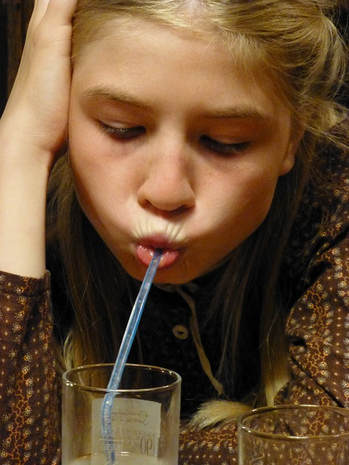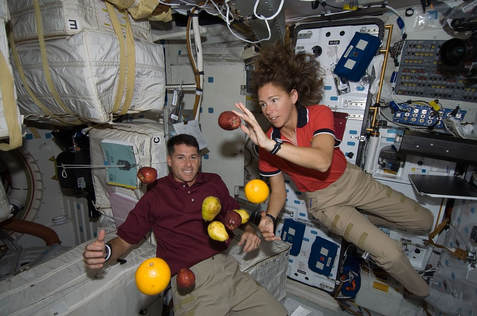|
We often frame the way we react to and interpret reality based on what we experience. This perfectly reasonable approach, however, is not always accurate, and science can explain why. I will present some examples today and try not to sound too pedantic while doing it! Consider sunrises and sunsets. For millennia we have basked in the splendor of the spectacle of the sun rising in the morning and setting in the afternoon. That is our experience, right? The sun goes up and then down. How many poems and paintings and songs have been inspired by sunrises and sunsets? How many metaphors? The mere sight of the orb of the sun clearing the horizon or sinking below it has had a profound influence on the psyche of our species. The problem here is, of course, that the sun doesn’t “rise” or “set”, it is the Earth that turns! “Sunrises” and “sunsets” are just an illusion created by the fact that we are living on a rotating planet.  When drinking a beverage through a straw many people will claim to be “sucking” the liquid. If pressed to explain how the liquid gets from the container to their mouths, they will probable add that they create a vacuum inside the straw with their mouths and the vacuum “sucks” the liquid. This is not true. You have several hundred miles of air on top of you which generates a pressure at sea level of 14.7 pounds per square inch. This tremendous pressure is applied to everything including the drink and the air inside the straw. When you “suck” on the straw, your lungs expand creating a low pressure area inside them which is transmitted to the cavity inside the straw, and air moves from high pressure areas to low pressure areas. But in this case, the beverage is between the inside of the straw and the atmosphere. Thus the atmosphere pushes the liquid up the straw and into your mouth. The same happens with a vacuum cleaner. The motor creates a low pressure zone inside the machine by blowing air out, and the atmosphere pushes the air towards the inside. Sucking a liquid with a straw or operating a vacuum cleaner inside a room where the air has been removed (i.e. where the effect of the atmospheric pressure has been eliminated) would not work. Vacuums don’t suck. It is the atmosphere that pushes. How many people have asked others to shut a window or a door because they are letting the cold in (winter) or out (summer)? Here “cold” is being treated as an entity, and that is the problem. Cold doesn’t exist! The real entity is heat energy. Heat has a physical correlate (molecular vibrations) and can be measured (temperature is the measure of the heat content of something). At absolute zero (−459.67 °F), molecular motion ceases, there is no heat, and things can’t get any colder. What we perceive to be colder is something with less heat, and what we perceive to be warmer (or less cold) is something with more heat. Much in the same way that darkness is the absence of light and not a real entity in itself; cold is the absence of heat.  Let’s do one last one. We have seen videos of astronauts in the International Space Station (ISS) moving around their craft. Most people describe the astronauts as floating. Strictly speaking, this is not accurate, as for something to float it has to have a density lower than the medium surrounding it (think a balloon filled with helium released into the atmosphere). The astronauts pirouetting about the ISS are not less dense than the air that surrounds them, therefore they are not floating. At this point most people would clarify that the astronauts just appear to be floating. That is a fair reply, but when pressed as to why this is the case, many will answer that it is because there is no gravity in space. This is again not true. To understand why, imagine the following: you jump from a high diving board. During the few seconds before you hit the water are you floating? No, you are falling. Now imagine that as soon as your feet leave the diving board a room materializes around you, and this room has a camera in a corner. If I were to check the footage of the camera for the few seconds before you and the room hit the water, I would see you seemingly “floating” inside the room. But you are not floating, you are falling. Similarly, the astronauts inside the ISS are falling towards the Earth because they and the station are being pulled by gravity towards our planet. So why doesn’t the ISS crash and burn? This is because the station is moving at just the right speed to match the curvature of the Earth. As the ISS falls, the Earth curves, so the station and the astronauts inside it are always falling, but they never hit the ground. Gravity is alive and well in space. These are some cases of how our experience does not accurately describe the actual physical phenomena in the world that surrounds us. Can you think of any other examples? Please leave a comment, and let me know. Images from Pixabay used under a CC0 Creative Commons license.
0 Comments
Your comment will be posted after it is approved.
Leave a Reply. |
Details
Categories
All
Archives
June 2024
|
 RSS Feed
RSS Feed